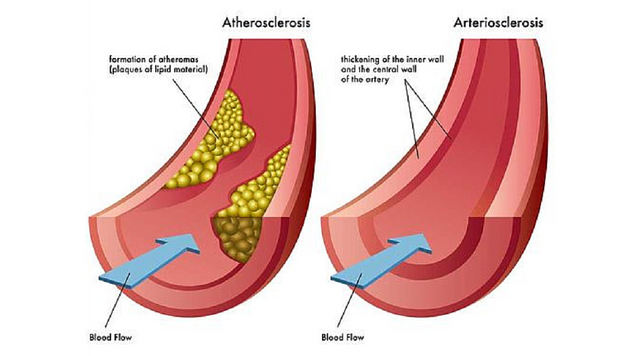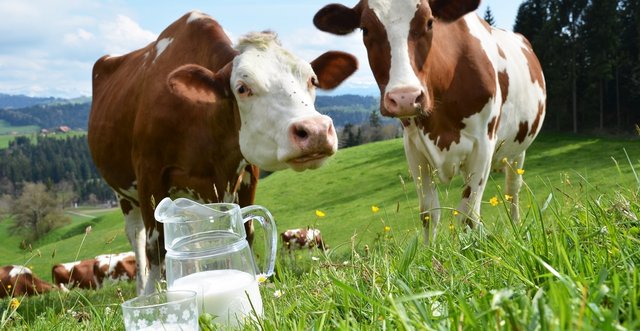What Is Good Nutrition?

Good nutrition will be different for each person. We all have a blood type that guides us as to what our body needs. Certain foods, because of our ancestry, allow us to function at a high level. I, as an example, have an A blood type and perform optimally on greens, nuts, and lean proteins such as fish. My wife, is an O blood type, and she needs meat, lots of meat. I love my wife.
Yet, aside from the basics of your blood type, there is a foundation of good nutrition that goes to the core of the food itself. What am I talking about? I am referring to enzymes. Digestive enzymes are a fairly common discussion, especially in the U.S. where digestive issues are a problem. There is another type of enzyme we will discuss, along with digestive enzymes, that gets at the heart of what good nutrition is.
Before we discuss this other enzyme, it would be helpful to know exactly what an enzyme does. An enzyme is a catalyst - an item that serves to speed up the function of another part. For example, a magnifying glass amplifies the effect of sunlight.
Systemic enzymes are a biocatalyst; they speed up the functions of the body at a biological level. Systemic enzymes are what allow our bodies to operate, heal, and grow at peak performance. The word "systemic" is defined as body wide or comprising all parts, rather than just a singular part. There are approximately 3,000 enzymes in the body that cause over 7,000 reactions. Without systemic enzymes, our bodies would be unable to work.
What does an average day look like for a systemic enzyme?
"Enzymes eat scar tissue and fibrosis. Fibrosis is scar tissue, and most doctors learn in anatomy that it is fibrosis that eventually kills us all. Let me explain. As we age, which starts at 27, we have a diminishing of the bodies’ output of enzymes. This is because we make a finite amount of enzymes in a lifetime and we use up a good deal of them by the time we are 27. At that point the body knows that if it keeps up that rate of consumption we’ll run out of enzymes and be dead by the time we reach our 40’s. (Cystic Fibrosis patients who have virtually no enzyme production to speak of, even as children usually don’t make it past their 20’s before they die of the restriction and shrinkage in the lungs from the formation of fibrosis or scar tissue).

Systemic enzymes help keep our blood clean. Our blood is the river of life in our bodies. The bloodstream acts as a garbage truck transporting what is not useful and toxic to organs, such as the liver, for "processing." If there is a pileup on the highway, our blood mobile cannot do its job. Blood clots are not only painful, but they are also deadly. Systemic enzymes eat the excess fibrin that accumulates in our bloodstream.
Another function of systemic enzymes is acting as an anti-inflammatory. Inflammation is the bodies response to stress. For instance, you cut your finger and then your body begins the process of healing. We see a spot that becomes red and irritated. The bloodstream is sending a protein chain, called a CIC, or Circulating Immune Complex, that is specific for that finger to rebuild the skin and tissue.
When we take an Aspirin or Ibuprofen, we are actually telling the body to not make CIC's. There are good CIC's, and bad CIC's. Inflammation is self-perpetuating, and thus you have "bad" CIC's that stir up the pot. Aspirin and Ibuprofen cannot tell the difference. Systemic Enzymes can.
"...systemic enzymes can tell the difference between the good CIC’s and the bad ones because hydrolytic enzymes are lock and key mechanisms and their "teeth" will only fit over the bad CIC’s. So instead of preventing the creation of all CIC’s, systemic enzymes just “eat” the bad ones and in so doing lower inflammation everywhere. With that, pain is lowered also.
Where do we find sytemic enzymes?

Enzymes are contained in our food. Each food actually contains the digestive enzymes necessary to break that specific food down. For example, lactase is the enzyme in milk that aides the body in breaking down the components of milk. However, when we overcook our food we actually destroy the enzymes it holds.
All enzymes are deactivated at a wet-heat temperature of 118 degrees Fahrenheit, and a dry-heat temperature of about 150 degrees. It is one of those happy designs of nature that foods and liquids at 117 degrees can be touched without pain, but liquids over 118 degrees will burn. Thus we have a built-in mechanism for determining whether or not the food we are eating still contains its enzyme content”.
It took me years to figure out why I could not drink milk without having an upset stomach. It was not until I did research, and started drinking raw milk, that I realized why. Processing food actually heats it above a level where the essential enzymes are kept intact. Pasteurizing milk is commonly done at a temperature of 161 degrees Fahrenheit. Although it is not for long in order to retain as many nutrients as possible, it stills destroys many of the enzymes needed from that milk.
The more research I did, the more I realized that not only is it important to know what to eat, it is even more important to eat that food in its original state. Raw nuts, raw greens, and one my favorites, raw milk, are the way to go. This is difficult for sure. We cannot always ensure we are eating our food in this way, especially when eating at restaurants. The body is an amazing machine, though. If we give it enough good food to work with, it can dispel the bad food with much more ease. That is why knowing what systemic enzymes are, and giving our bodies an ample supply of them, is the basis for good nutrition.

This post has been ranked within the top 50 most undervalued posts in the first half of Jan 15. We estimate that this post is undervalued by $4.64 as compared to a scenario in which every voter had an equal say.
See the full rankings and details in The Daily Tribune: Jan 15 - Part I. You can also read about some of our methodology, data analysis and technical details in our initial post.
If you are the author and would prefer not to receive these comments, simply reply "Stop" to this comment.